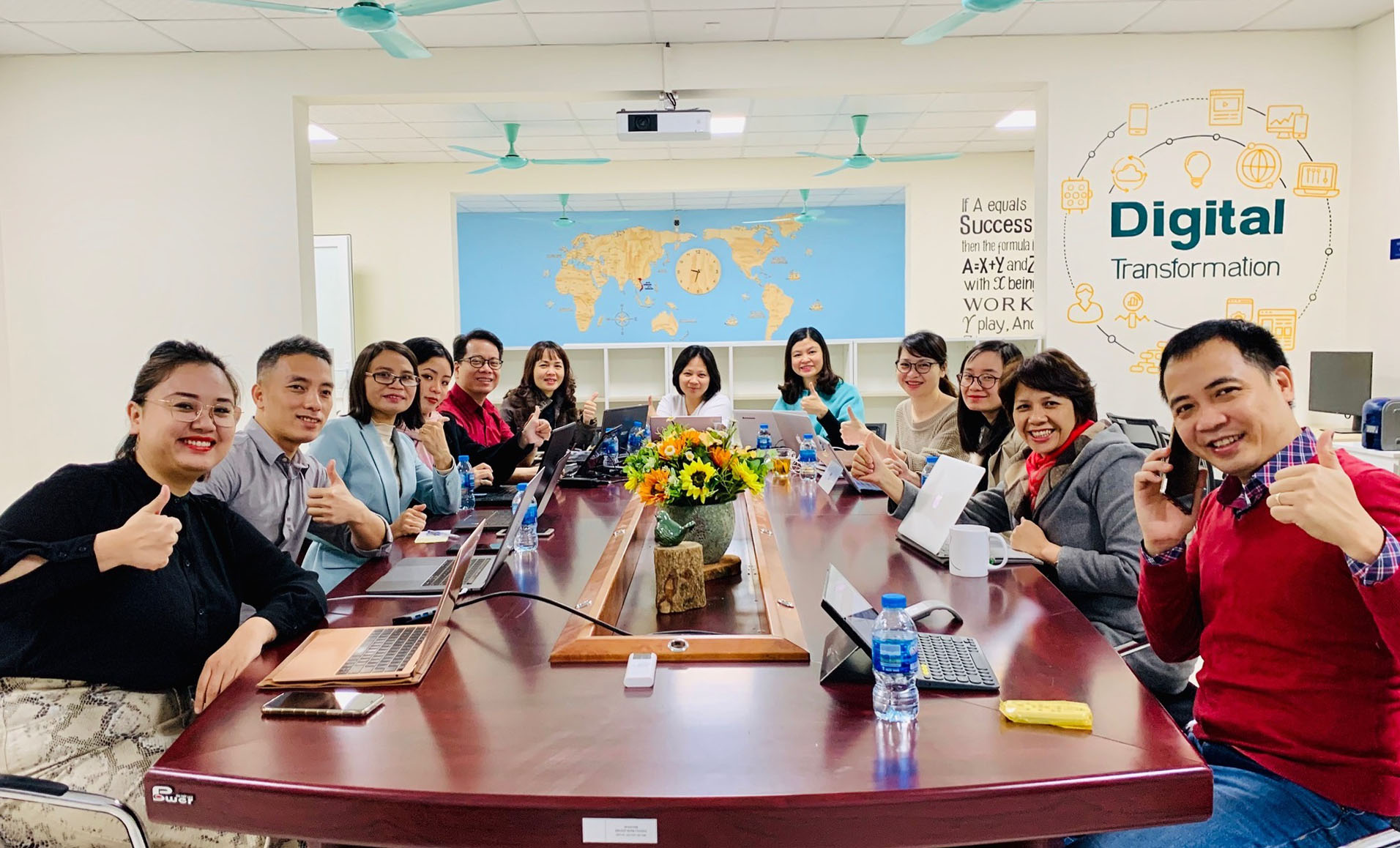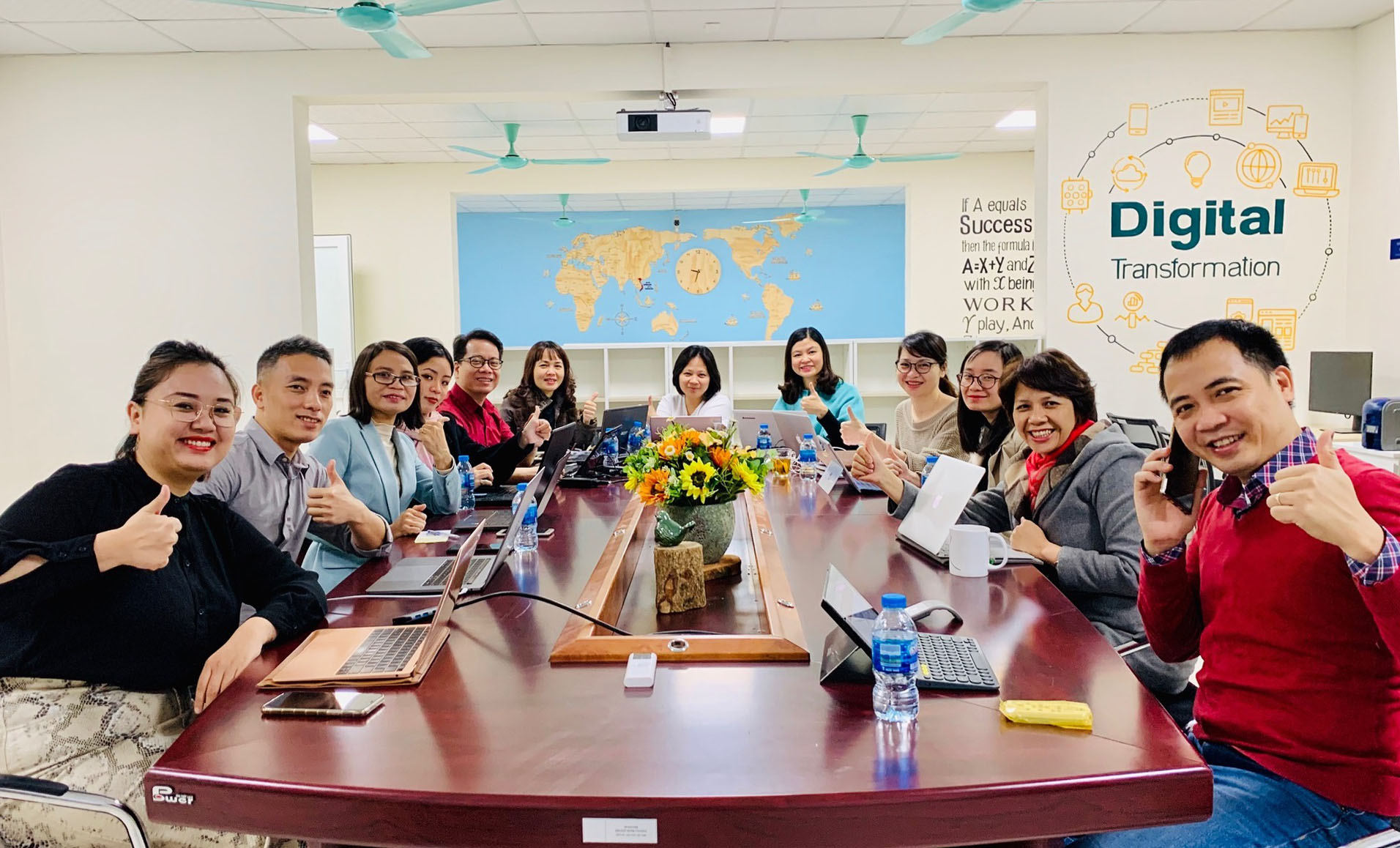
The system allows for online teaching and interaction through audio, video, and text chat. This is a highly interactive virtual classroom model (one-on-one interaction, group interaction); equivalent to a real classroom and allowing instructors to proactively manage the class and exchange knowledge.
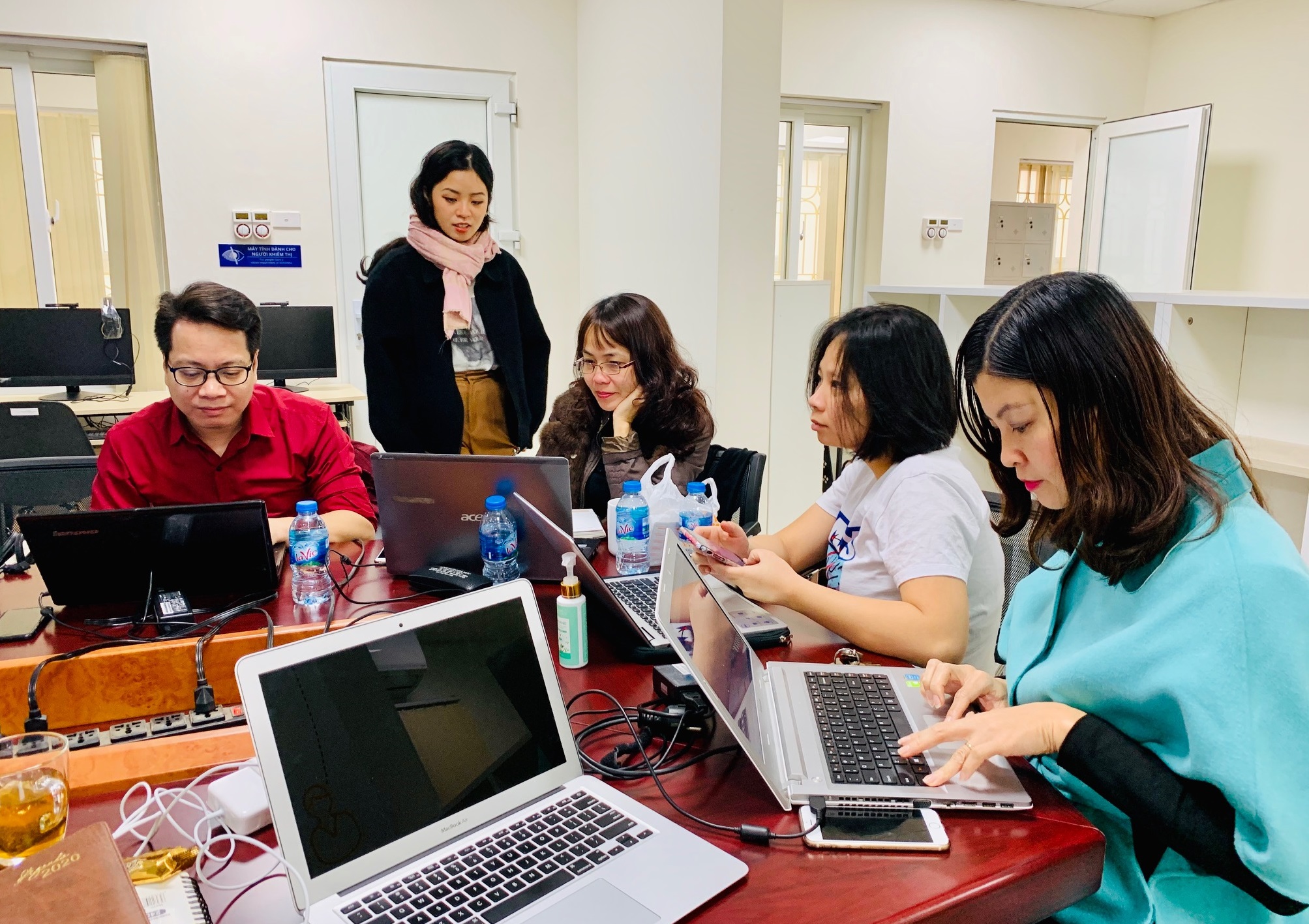
The system allows students to engage in diverse activities such as: listening to online lectures, discussing directly with instructors, participating in group discussions, taking tests, accessing online digital learning materials, and maintaining regular contact with instructors.
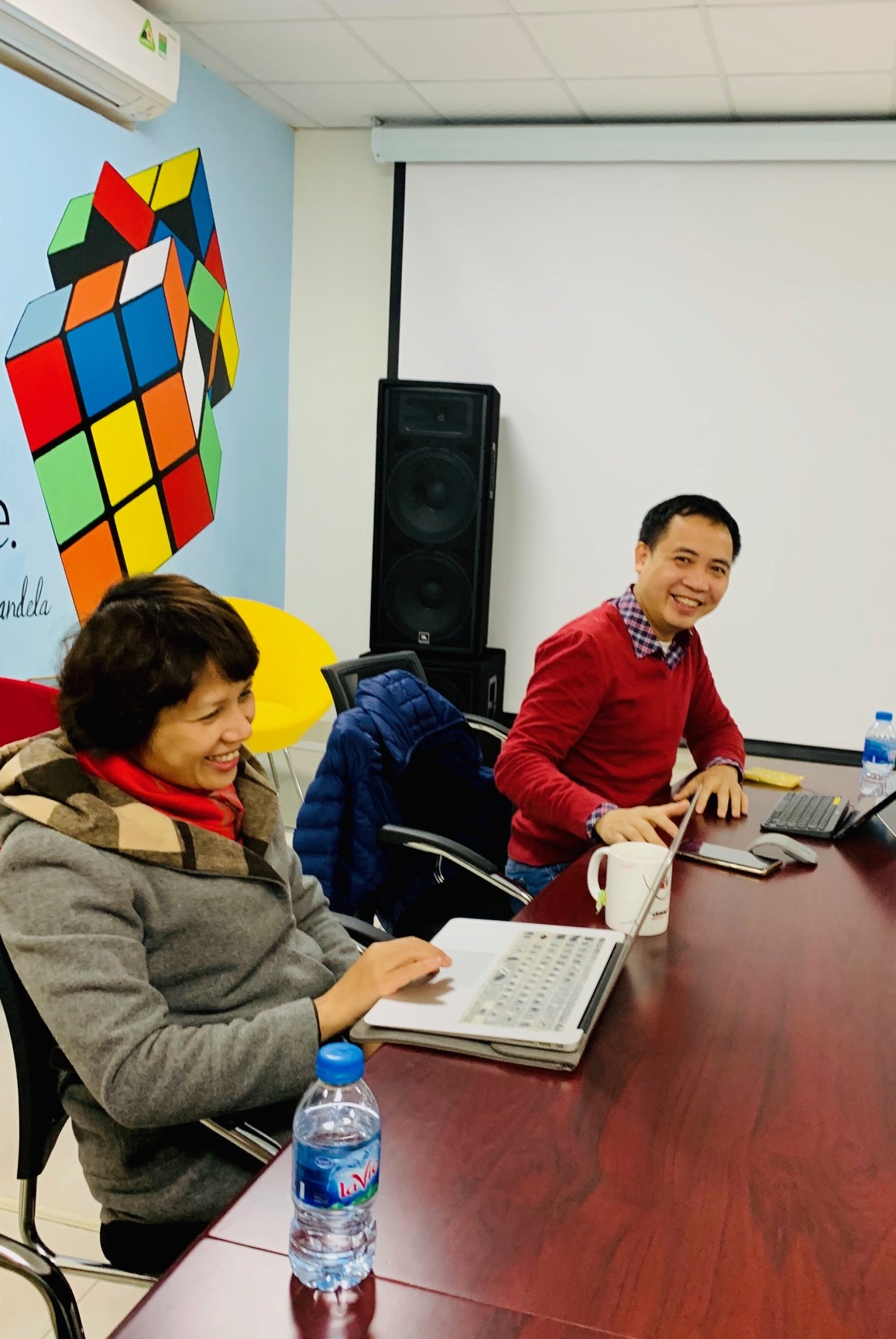
E-learning will be a trend in teaching innovation at the University, focusing on individualizing learning needs and applying technology in teaching. The Faculty of Information and Library Science has been applying blended learning methods, allowing for the combination of online and in-class teaching to increase the effectiveness and quality of training.
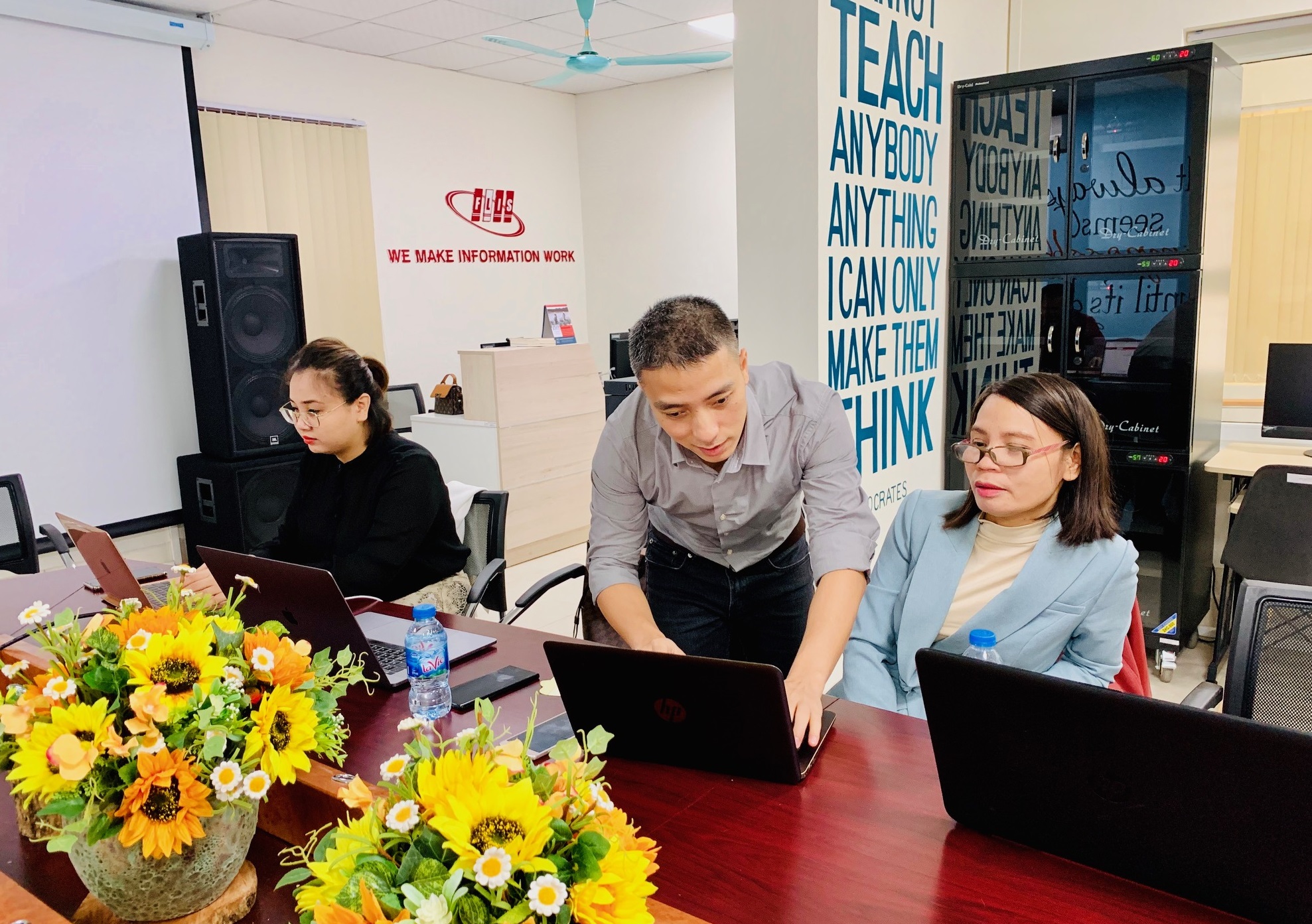
|
According to Dr. Do Van Hung, Head of the Information and Library Science Department, the implementation of e-learning training has the following advantages and disadvantages:
Regarding advantages
For teachers and learners
- Flexible teaching: flexible teaching and learning can be organized anytime, anywhere, providing maximum support to learners according to their individual needs.
- Interaction and collaboration: Enhance regular interaction between teachers and learners, and among learners themselves, both inside and outside of class time.
- Use multimedia (video, audio, images, text, graphics, etc.) to enrich your lectures.
- Quick and simultaneous feedback, maintaining regular connection between instructors and students.
- Assess students regularly and gather feedback promptly.
- Students can track their learning progress and review sections they have already studied in previous weeks.
- Easily share learning materials and organize your learning resources.
For the School
- Solving the problem of insufficient lecture halls and supporting facilities.
- It is possible to widely implement common subjects and subjects with a shortage of teachers.
- Cost savings in training implementation.
- Expanding the scale of training means expanding learning opportunities for more people.
- Create a modern and professional learning environment.
- Strengthening training cooperation with other units both domestically and internationally (especially effective when geographical distance is a barrier).
Regarding limitations and challenges
For teachers and learners
- Instructors need to prepare detailed lesson plans to ensure effective implementation.
- Electronic learning materials and supporting learning resources need to be abundant, and instructors need to prepare these materials carefully.
- Instructors need to dedicate significant time to lesson planning, student assessment, and providing support and guidance throughout the course.
- Both teachers and students need to have computer skills and a basic understanding of office software.
- Equipment is needed for teaching and learning: a computer or smartphone, and an internet connection.
- Because they don't meet in person, it can affect the connection and understanding between teachers and students.
- Technological issues may arise, such as computer malfunctions or internet connection interruptions, leading to disruptions in teaching and learning.
For the School
- Initial investment is required for: upgrading IT infrastructure and initial costs to incentivize faculty participation.
- The training process needs to be revised and accompanying policies need to be implemented.
- Faculty members are hesitant to participate.
|
